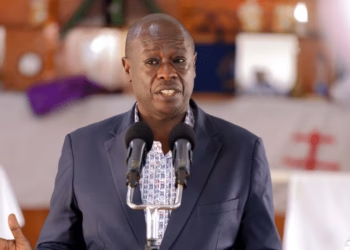Bird enthusiasts have introduced a new tool designed to help developers and regulators pinpoint areas where renewable energy projects could negatively impact bird populations.
The Avian Sensitivity Tool for Energy Planning (Avistep) has been launched in Egypt, Kenya, Laos, and Uzbekistan, complementing its existing use in India, Nepal, Thailand, and Vietnam since 2022.
This open-access tool allows users planning onshore and offshore wind, solar energy, or power lines to assess potential impacts on birds and wildlife. By zooming into a specific area, users can view a color-coded map (green/amber/red) indicating whether a 5×5 km section is protected, contains high-risk species, or features rich wildlife habitats.
BirdLife International, with support from DEG Impulse, has spearheaded the rollout of Avistep, while Nature Kenya played a key role in its development by conducting bird surveys and consulting with national stakeholders to identify species vulnerable to power line collisions and electrocution.
“Avistep is a revolutionary tool that will transform energy planning in Kenya, ensuring raptor conservation by pinpointing crucial habitats and flight paths,” said Paul Gacheru, conservation manager at Nature Kenya.
Anne Schneeweis, project manager at DEG Impulse, expressed satisfaction in supporting this initiative, which aims to protect biodiversity in future renewable energy investments. The expansion of the tool was funded by the German Federal Ministry for Economic Cooperation and Development.
As many countries shift from fossil fuels to renewable energy in response to climate change, there’s an opportunity for significant positive change. However, poorly planned developments could harm biodiversity, risking millions of acres of natural habitat and affecting many threatened species.
BirdLife’s Tris Allinson emphasized that renewable energy is not truly sustainable unless steps are taken to minimize negative impacts on biodiversity.
In Kenya, the introduction of Avistep comes at a time when wildlife poisoning threatens vultures, and energy infrastructure like wind turbines and power lines pose risks to raptors. The recent launch of a 10-year action plan to protect vultures aligns with these efforts, aiming to safeguard populations as they decline.
Globally, there are 23 vulture species, with the action plan targeting the conservation of eight in Kenya, including critically endangered species like Rüppell’s, white-backed, and white-headed vultures. Vultures face significant threats due to their slow breeding and high vulnerability to poisoning.
The estimated national populations of various vultures in Kenya highlight the urgency of conservation efforts: white-headed vultures (60-100), hooded vultures (800-1,500), white-backed vultures (1,000-2,000), and Rüppell’s vultures (2,000-3,000), among others.
The Vulture Multi-species Action Plan for Kenya (2024-34) is supported by the Peregrine Fund and Nature Kenya, aiming to address these critical conservation needs.

















